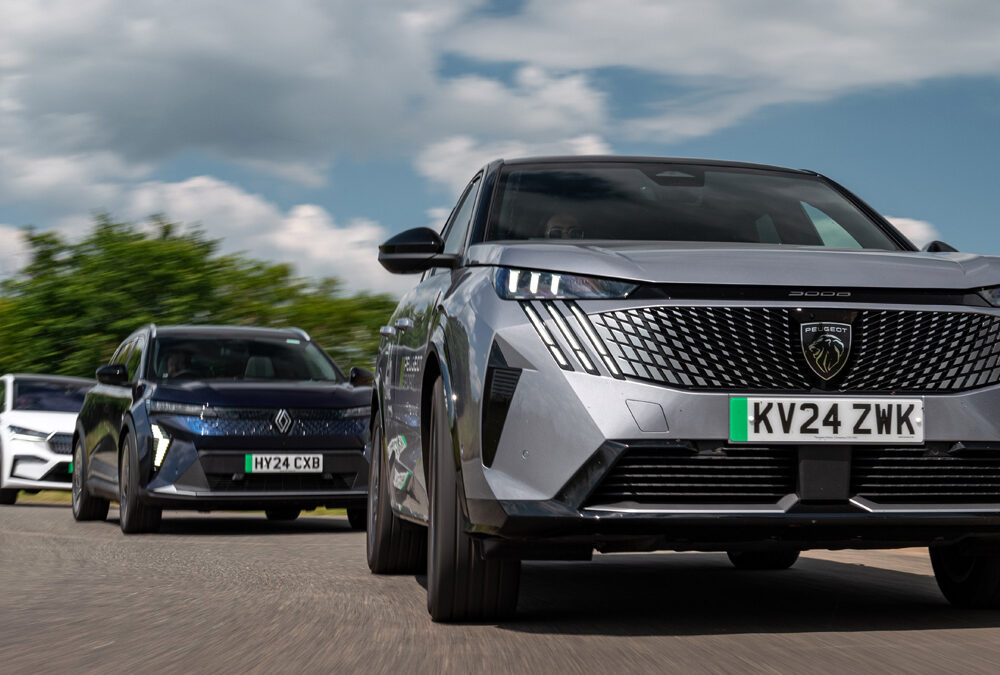
THE GIANT TEST
Renault Scenic | Peugeot E-3008 | Skoda Enyaq Coupe
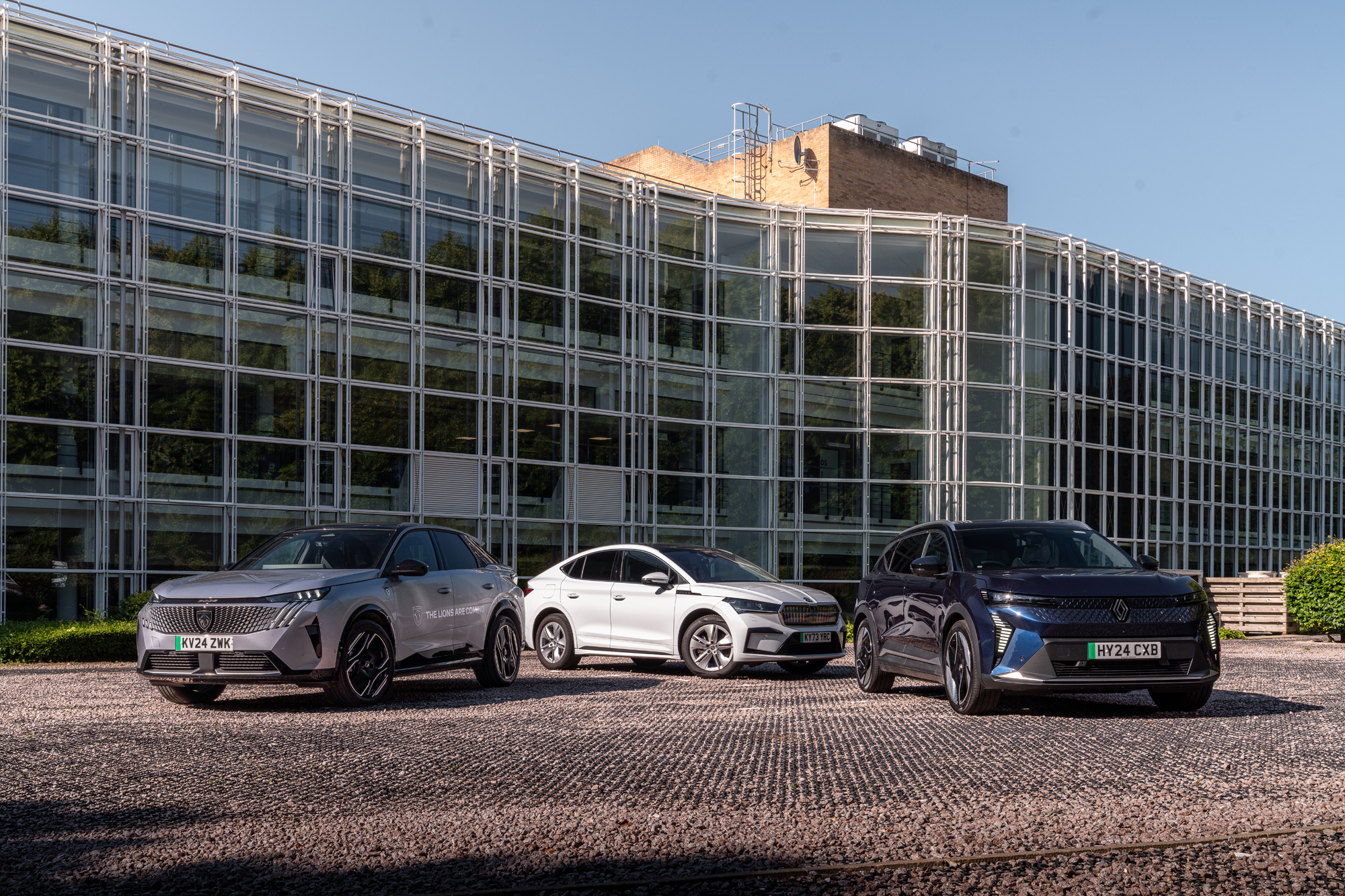
MORE THAN MEETS THE EYE
Interchangeable electric SUVs from Renault, Peugeot and Skoda? Actually, no. They’ve all got a lot going for them – but two are much better than the other one…
The barrage of thousand-horsepower electric supercars has eased a bit, so we can all now come up for air and see what the new reality looks like. And it turns out that today’s mainstream looks a lot like the last generation of family cars, except that now many of them are offered with a powertrain choice that includes battery-electric, and in some cases it’s electric or nothing.
What’s pleasantly surprising is that to some extent they’re better than the old guard. Zero tailpipe emissions, of course, and lively acceleration, but also a good amount of interior space in the case of those cars designed to be electric from day one, and some user-friendly details that can make your passengers very happy. And if they’re happy, you’re happy.
Here we have the new Renault Scenic – current European Car of the Year – going up against the new Peugeot E-3008 and new-ish coupe version of the Skoda Enyaq. All broadly the same size and a similar price range, and all aimed firmly at families who want something just that little bit special. And if they’re good to drive, all the better.
Performance wise, it’s the Enyaq that’s the sprinter here despite being the heaviest of our trio
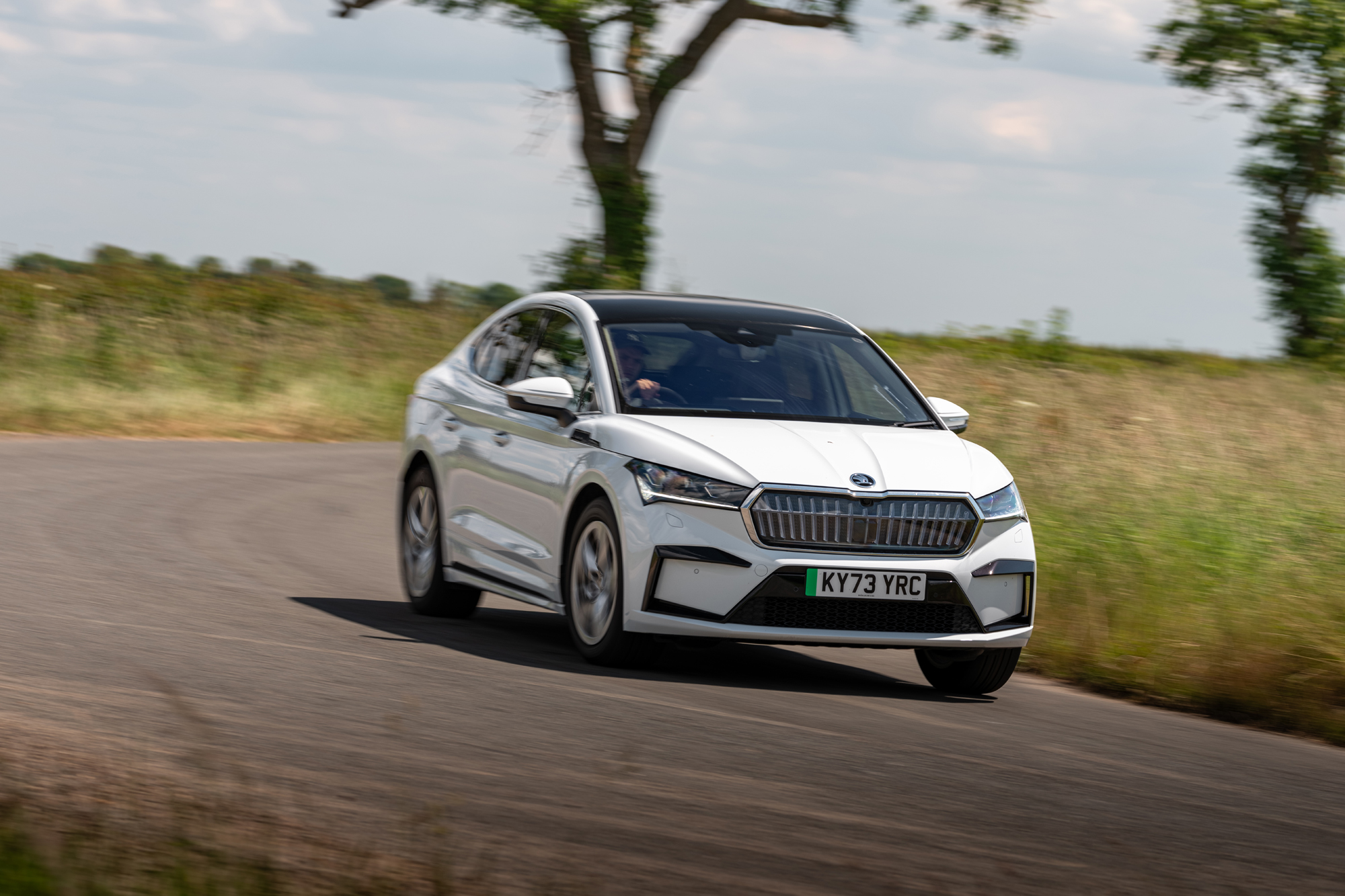
First up, the Scenic. Like the Megane and the imminent new 5, the Scenic gets its name from Renault’s back catalogue. While the Megane and 5 remain hatchbacks, the Scenic joins the Espace – a model not available in the UK – in becoming an SUV rather than the MPV it used to be. Sort of.
At 1589mm, the Scenic’s 89mm taller than a Megane and just 27mm taller than a VW ID. 3. It’s also the shortest and lowest of our three five-seat competitors, helping it weigh a good couple of hundred kilos less. A 260-mile version, the ‘Comfort Range’, is available, but this is the Long Range that boosts the battery size to 87kWh for a claimed 369 miles of driving – the best on test. Here, it’s in top Iconic trim with two-tone paint the only option on our test car.
Like the Scenic, the Peugeot 3008 made the switch from MPV style to SUV, although it did that with the previous generation (and bagged the 2017 Car of the Year title). It’s now in its third generation and is available as, among other choices, the all-electric E-3008. It’s the first Stellantis group car to get the latest STLA architecture, a platform optimised for electric but capable of accepting engines. That allows Peugeot to sell a 3008 hybrid alongside the E-3008, unlike the EV-only Enyaq and Scenic.
At launch the E-3008 is only available with a 73kWh battery, 207bhp electric motor driving the front wheels and a best range of 326 miles. Joining later will be a dual-motor, all-wheel-drive version with over 300bhp, and a long-range front-driver that’ll be good for 400 or more miles, at least according to the official figures.
The Peugeot’s brakes are more impressive, blending regenerative and friction braking pretty smoothly
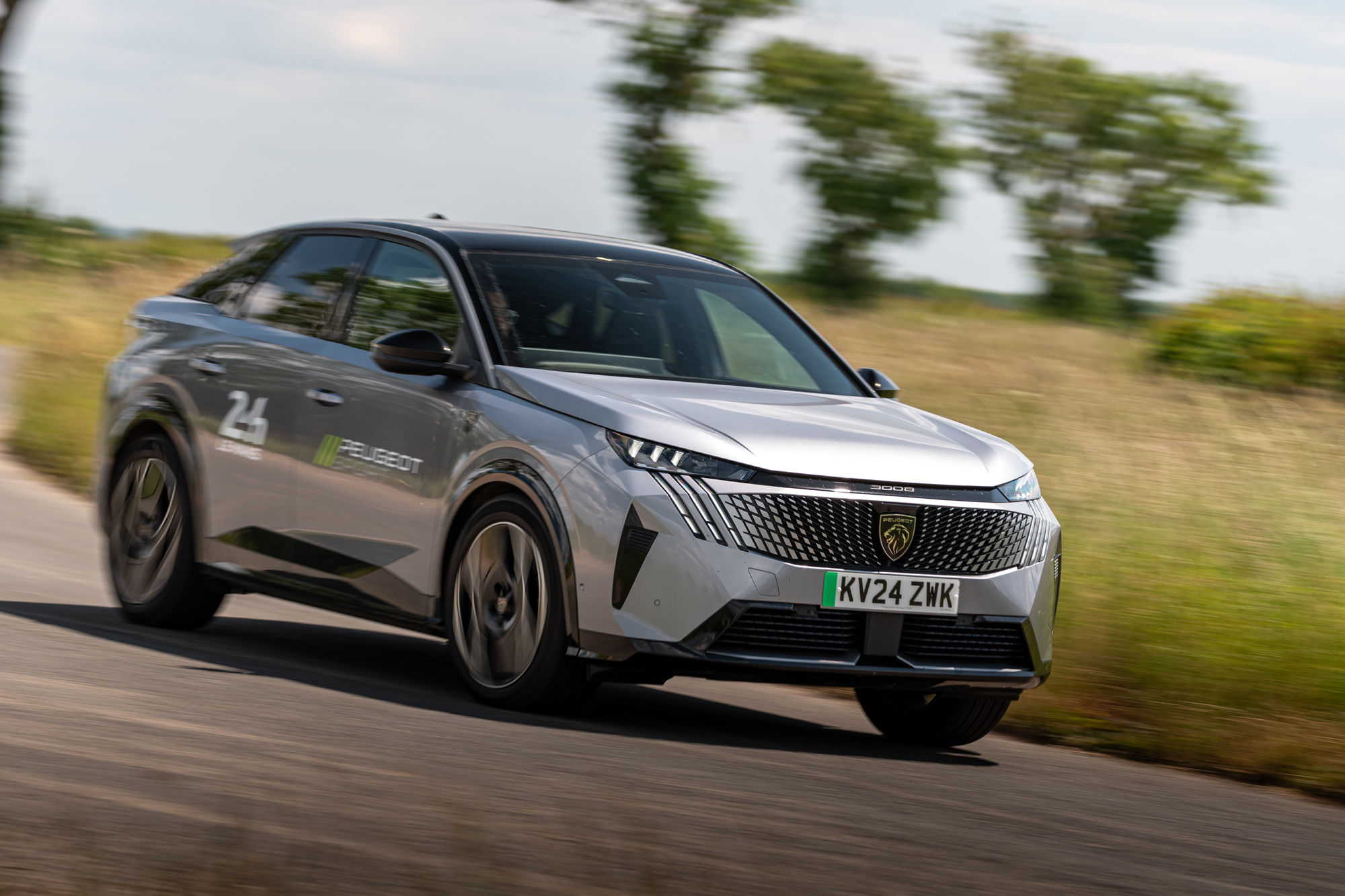
Our test car is the top-spec E-3008 GT with fancy paint, additional driver-assist features and a heat pump (a range-boosting addition that’s optional on the Enyaq, but not fitted to our test car, and standard on the Scenic).
The current shape of the E-3008 is quite coupe-like. Skoda takes a different approach, offering two bodies, the regular SUV-shaped Enyaq and the Coupe version tested here. The Enyaq is one of today’s best all-round electric SUVs, and is sensibly priced. While the Coupe is less adept at swallowing chests of drawers, it shares a few updates with the SUV, including a revamped infotainment system.
The most notable update is a more efficient electric motor that boosts range by a few miles and increases power by around 80bhp on the rear-wheel-drive 85 tested here. A twin-motor, all-wheel-drive version is also available, with the same 282bhp as our car. And at the top of the range is the four-wheel-drive 335bhp vRS. We’ve gone with the entry-level but very well equipped 85 Edition, plus £5k of options.
Performance wise, it’s the Enyaq that’s the sprinter here despite being the heaviest of our trio. It’ll hit 62mph from a standstill in 6.7 seconds. There’s no instant thump in the back, just linear but forceful acceleration. It’s plenty for a sensible family five-seater.
It’s the same story with the Scenic: the 7.9 second 0-62mph sprint time is quick enough. The slowest of the trio, the Peugeot, with its time of 8.8 seconds, would seem lively if it were keeping company with some similarly sized combustion cars, but you find yourself expecting more punch from a £50k EV.
The Peugeot’s brakes are more impressive, blending regenerative and friction braking pretty smoothly. The Scenic’s not bad either. But the Skoda has a disconcerting inconsistency to its deceleration, depending on whether it’s the regen or the calipers grabbing the discs that’s slowing you down. This makes it hard to drive smoothly.
Where both the Scenic and Enyaq have a certain appeal about the way they handle, the same can’t be said of the E-3008
The Enyaq cleverly adjusts its braking, automatically providing more retardation if its sensors detect something slowing ahead of you. It’s an effective system. Those who would rather keep full control for themselves can turn it off. The E-3008 and Scenic both have multi-stage regen that can make the driver feel more engaged with the car as you tap the level-adjustment paddle as you slow for a bend, almost like making downshifts on a car with a double-clutch automatic gearbox.
There are, however, few other driving pleasures to be had from the Peugeot. It’s tempting to point to the weight, and that certainly doesn’t help, but in reality the Enyaq weighs an extra 32kg and is more pleasant on the road. The E-3008 feels over-stiffly sprung, which is most noticeable around town, where the usual array of craters, crevices and carbuncles cause the Peugeot to thud and crash unpleasantly. Pick up a bit of speed out of town and it improves, yet there’s always an underlying fidgetiness that can irritate.
The Enyaq, by contrast, has more compliance over bumps and a more settled feel on the motorway. You are aware the suspension is trying to contain a lot of mass, though. As it gets towards the extremes of compression or extension, you feel strong rebound damping trying to pull the body back to normal ride height. It’s not uncomfortable as such, just not as soothing as it could be. The situation is improved by the optional adaptive dampers, part of the pricey Maxx options pack.
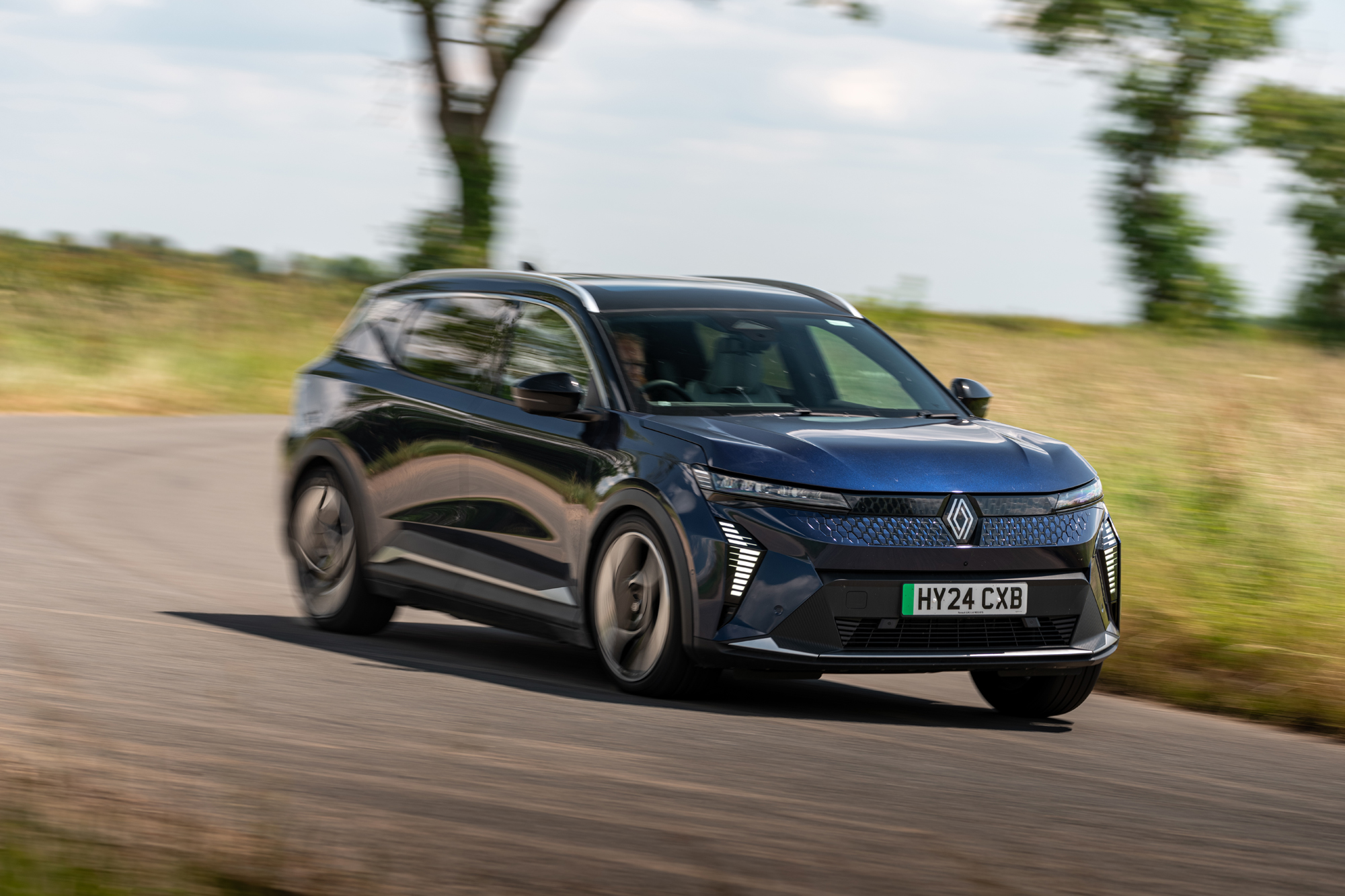
It’s the Scenic that’s comfiest, even when riding on the large 20-inch wheels that are standard on all but entry-level Techno trim. Body control is good despite the Scenic having the softest suspension here, thanks to its sizeable weight advantage. It still gets a little upset by dilapidated urban roads but on the whole it’s the gentlest-riding car here, and much better in that regard than the big-selling Tesla Model Y.
A supple ride doesn’t come at the expense of handling, either. The Scenic has the quickest steering on test at just 2.3 turns lock-to-lock which, like the Model Y, takes a bit of getting used to. Once you’re keyed into the precise and predictable steering rack, the Scenic feels keen to turn in to a bend. Body lean isn’t excessive for a family car and there’s plenty of grip, with the nose happy to tuck in if you come off the throttle sharply. It’s clearly a bigger, heavier car than the Megane E-Tech, yet that keen hatchback feel is in there.
The Enyaq generally feels safe, secure and a quite nimble. Slower-paced steering makes it an easier car to get in and drive initially, and it does feel more in keeping with the car’s size and weight. It’s no less accurate than the Scenic’s steering, allowing me to place the Enyaq confidently while enjoying the neutral balance and good grip.
Where both the Scenic and Enyaq have a certain appeal about the way they handle, the same can’t be said of the E-3008. It too has quick steering, and thankfully a normal-sized steering wheel. Neither of the Peugeot’s rivals could claim to have feelsome steering, but the E-3008’s is particularly PlayStation-like in its artificiality.
And the E-3008’s considerable bulk is highlighted by its quick-acting steering system, making it the car that’s least at home being driven quickly. Push hard and the nose will start to run wide before the electronics kick in, making it a safe but unsatisfying steer.
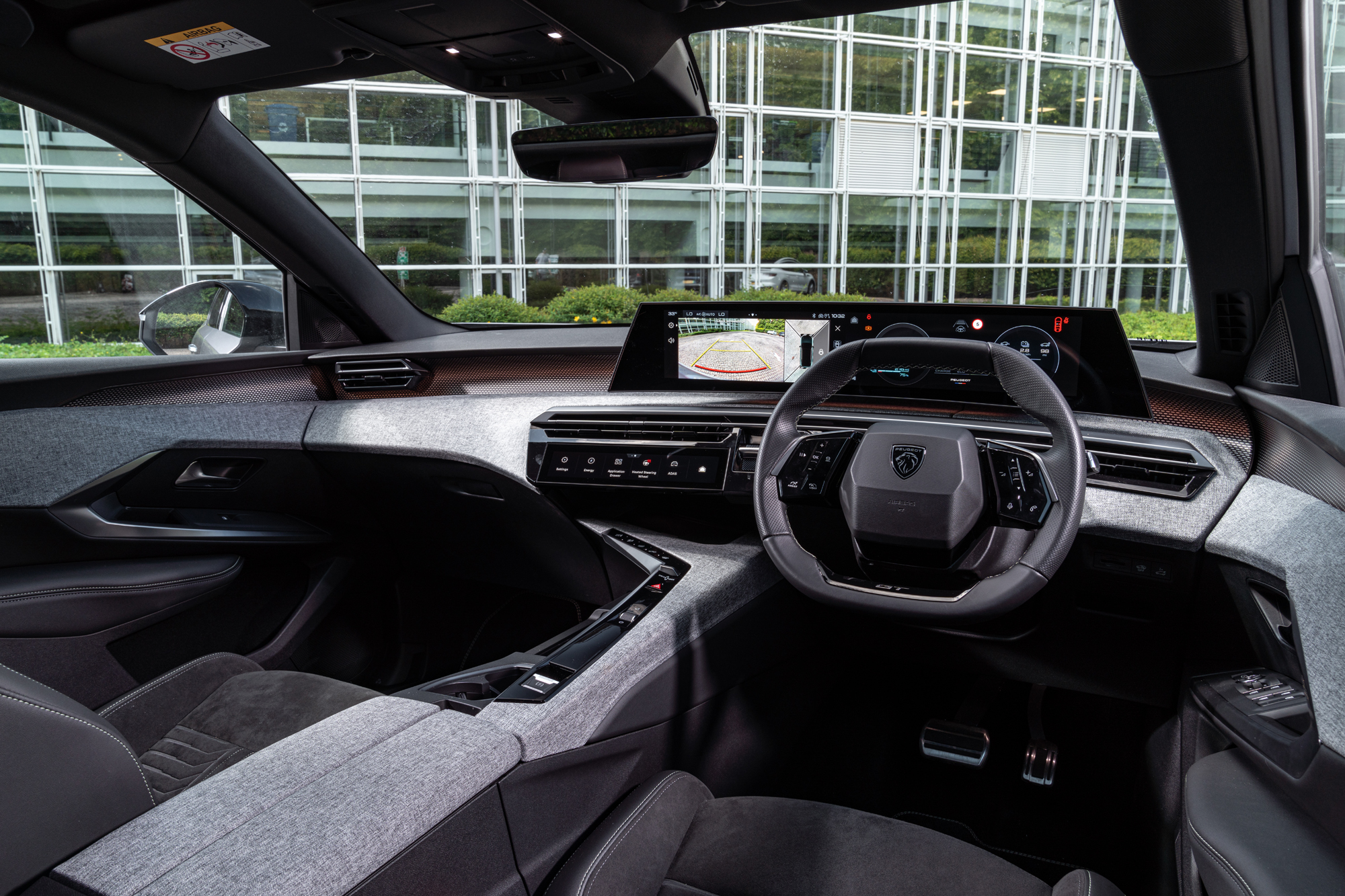
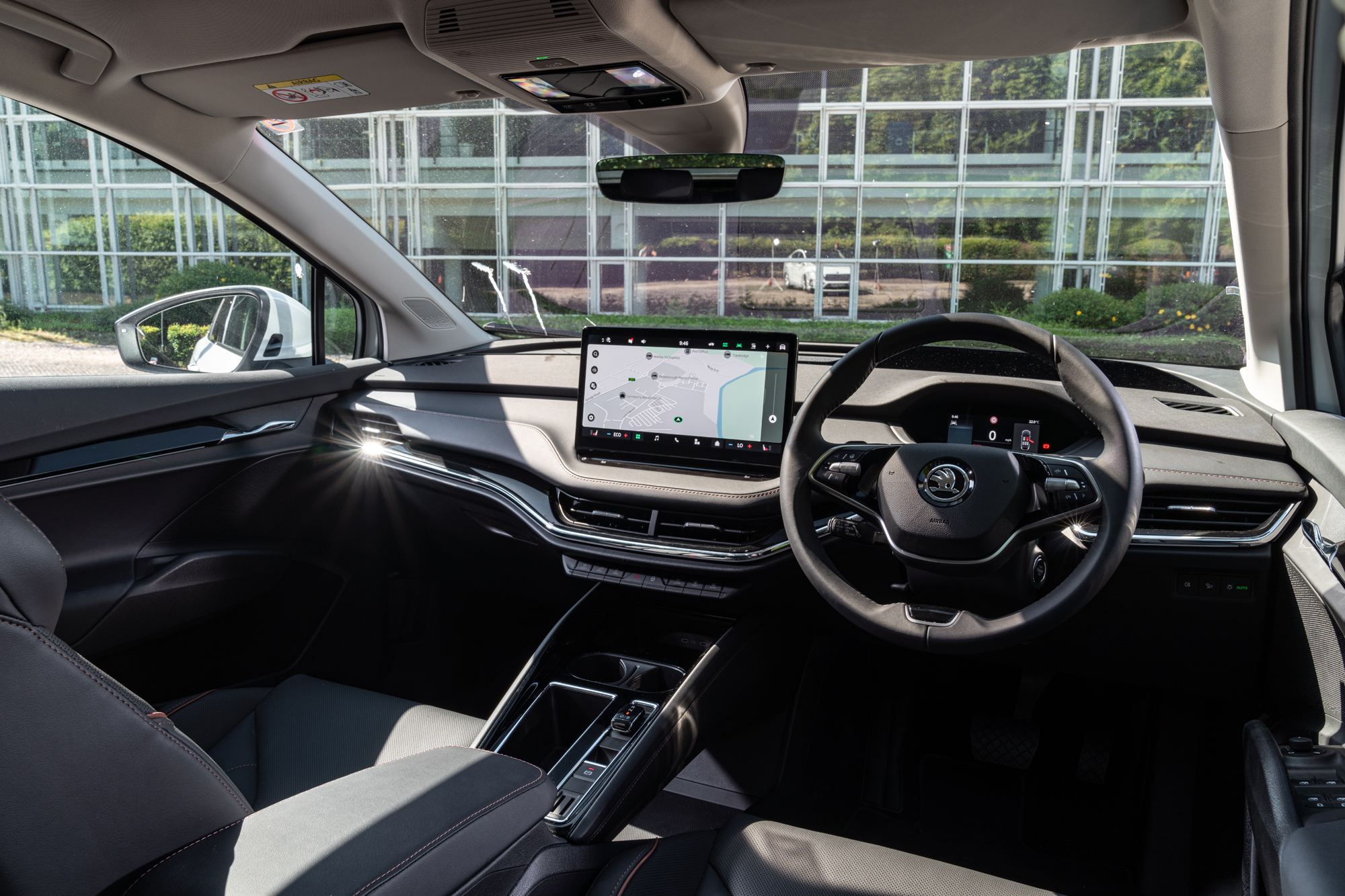
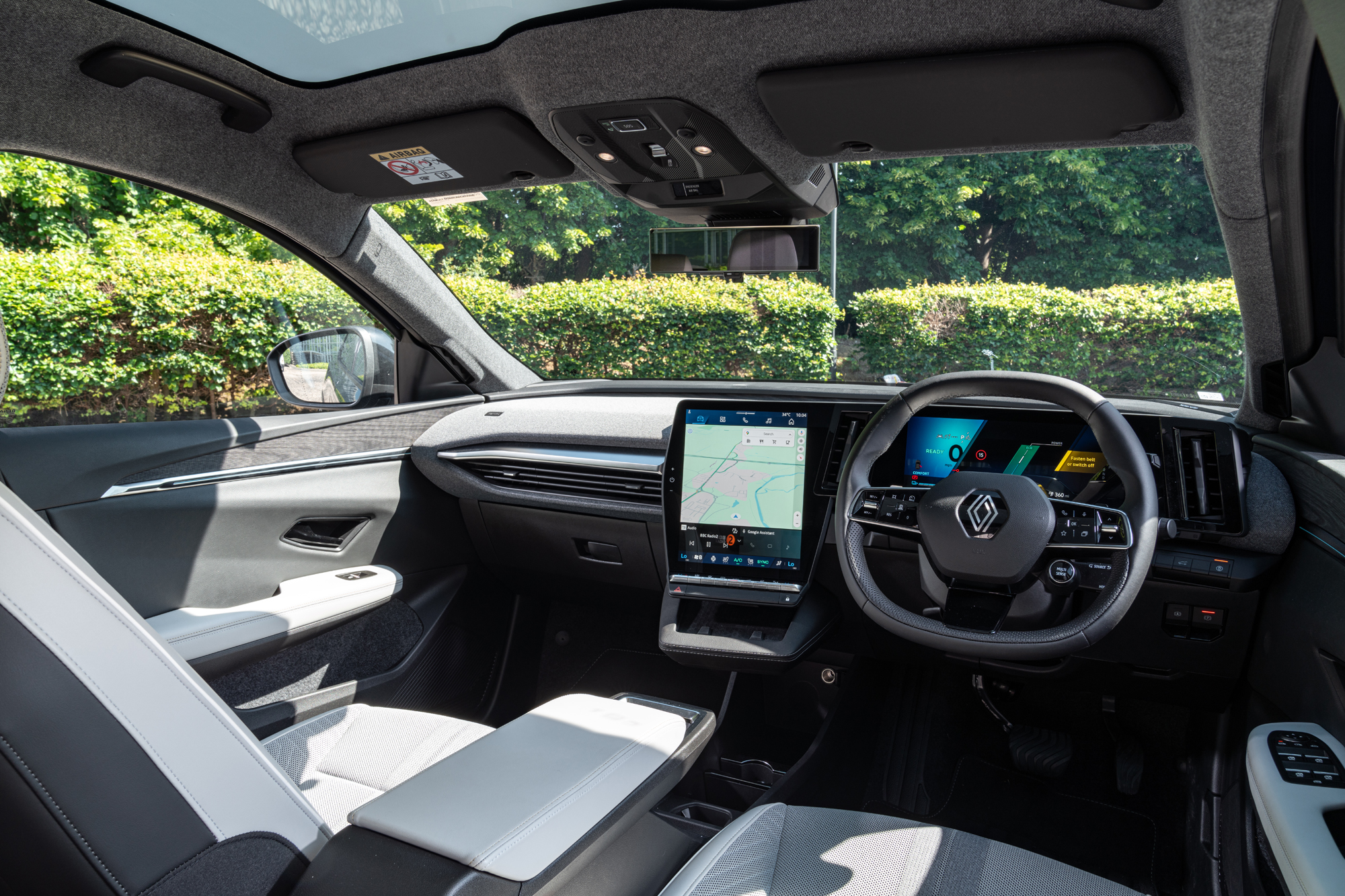
Clockwise frop top: Peugeot E-3008; Renault Scenic; Skoda Enyaq
It’s a shame, as the E-3008 has the most visually appealing interior to these eyes – similar to the previous version, but neatly freshened up. Inside, there’s now more fabric – rather than just plastic – on the doors and dash, there’s a huge 21-inch floating curved display for the instruments and infotainment, and another touch-sensitive display underneath. This is for Peugeot’s i-Toggles, configurable shortcut icons for anything from the heated seats to a favourite radio station.The infotainment system looks great, is responsive and not too hard to master. Interior quality is good, but not great.
The Enyaq looks almost dowdy after the E-3008, although it does feel of higher quality. Yes, the plusher Suite interior pack is fitted here and yes, the plastic door pulls feel awful, but important stuff like the steering-wheel controls and physical shortcut buttons are more substantial, and on the whole it’s more pleasant to the touch than the Peugeot.
The infotainment system is not the horror show recent experience may have led you to expect from the Volkswagen Group. There are still some menus that could be clearer at first glance, and I’d like the central screen to be angled more towards the driver, but the system is quick to respond and looks good in a sensible sort of way. The tiny driver’s display does look a bit penny-pinching, but it tells you the basics clearly enough.
It’s the Scenic that has our favourite interior, and not just because there are some actual buttons for the heating. For me, it strikes a perfect balance between the theatre of the Peugeot and the solid wipe-clean feel of the Enyaq. I like the pixelated ‘wood’ trim, I like the driver-centric feel behind the wheel, and I like the ample, easily accessed storage.
Renault uses a Google-based infotainment system that is responsive, if not the best-looking system here. It is easy to use and has the advantage of being able to directly download apps such as Waze. Unlike Polestar’s Google-based system, it allows you to run Android Auto if you prefer, or Apple CarPlay. Both are standard on the other cars here, too.
Rear passengers are best catered for in the Scenic. Like the Enyaq and E-3008 there’s no big transmission tunnel getting in the way of a kerbside exit or fifth passenger, and space is very good indeed. It has easily the most rear legroom of the group and the square roofline ensures good headroom, even with a panoramic roof with a clever electrochromatic blind fitted.
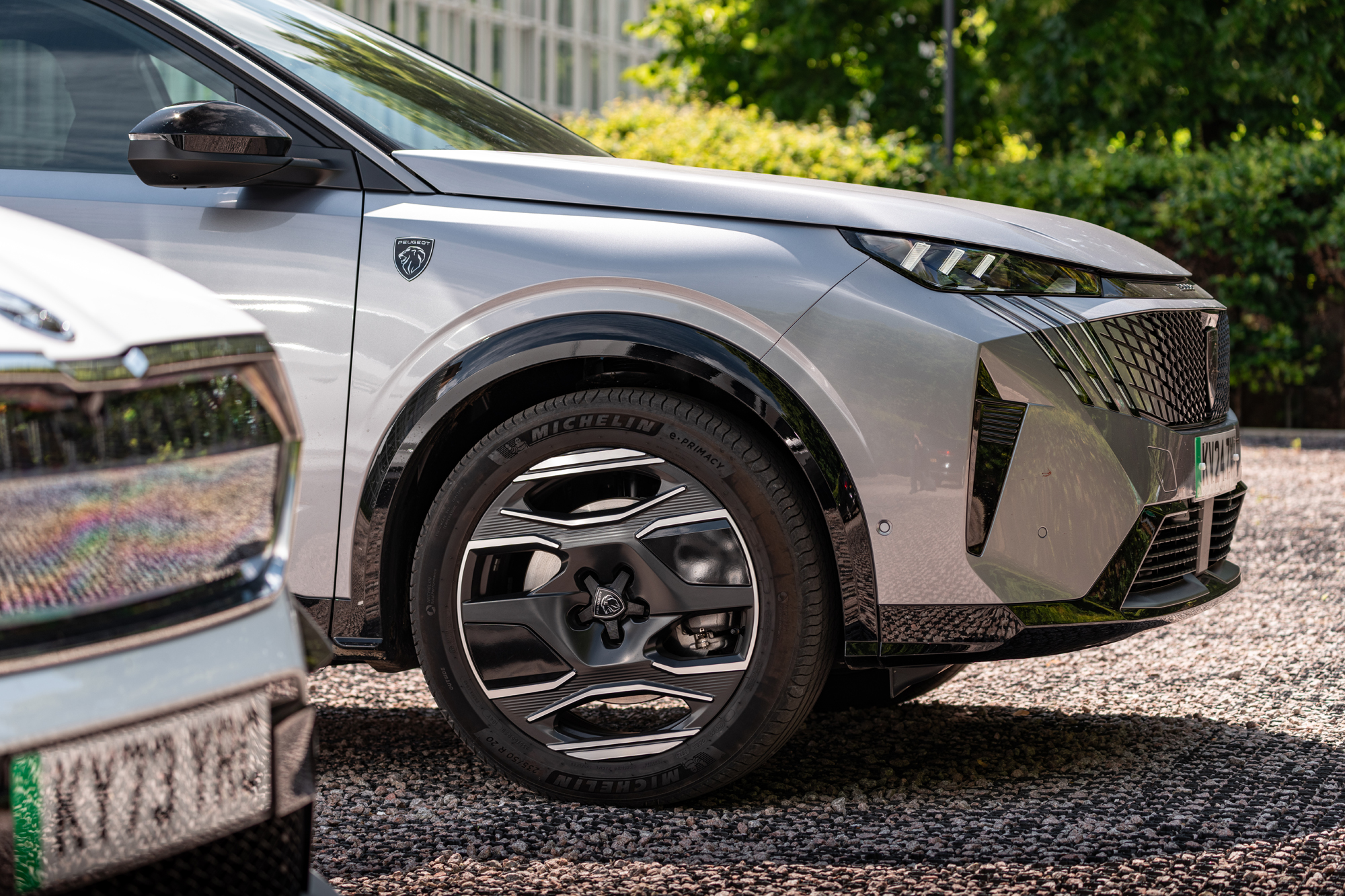
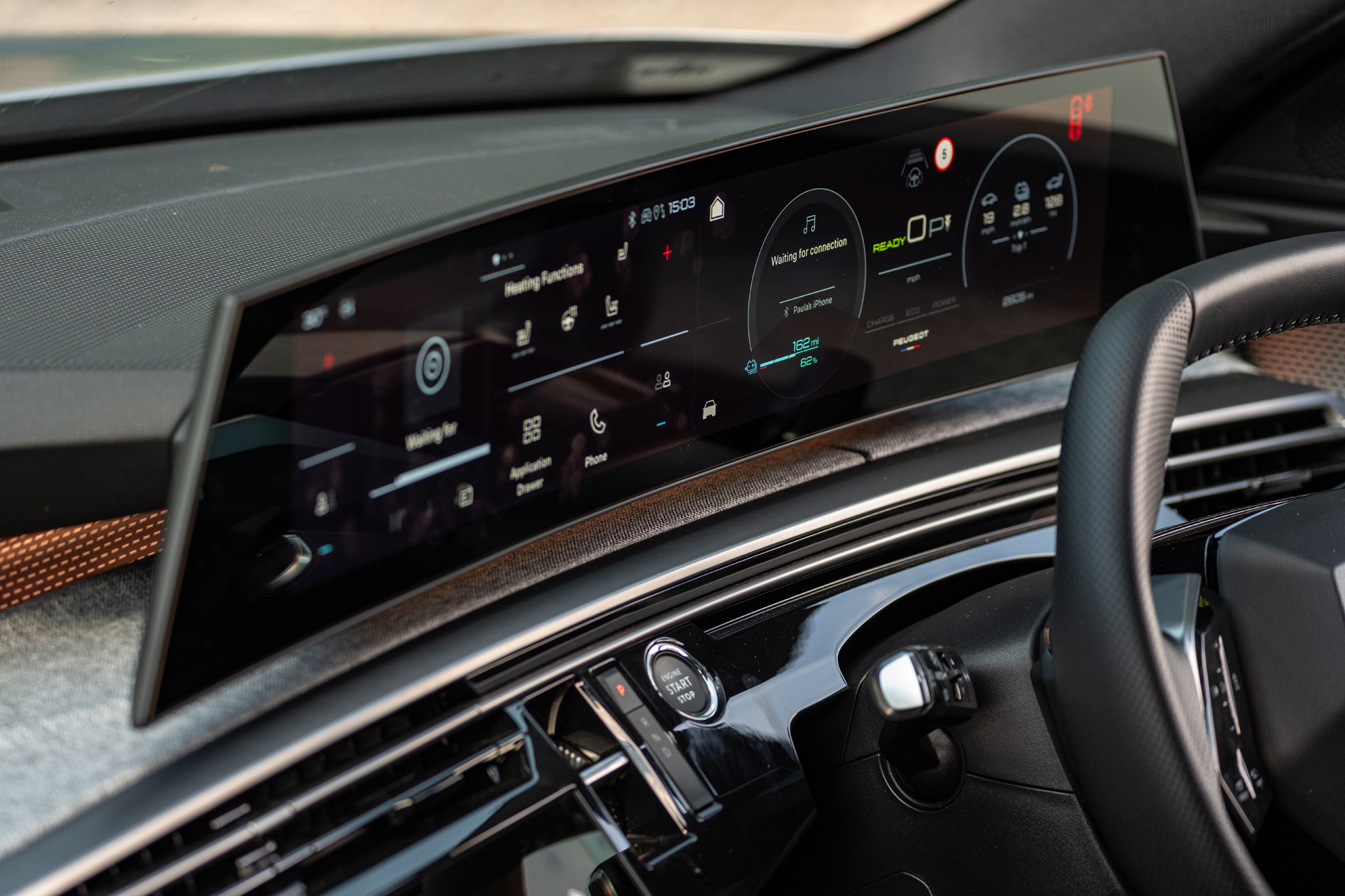
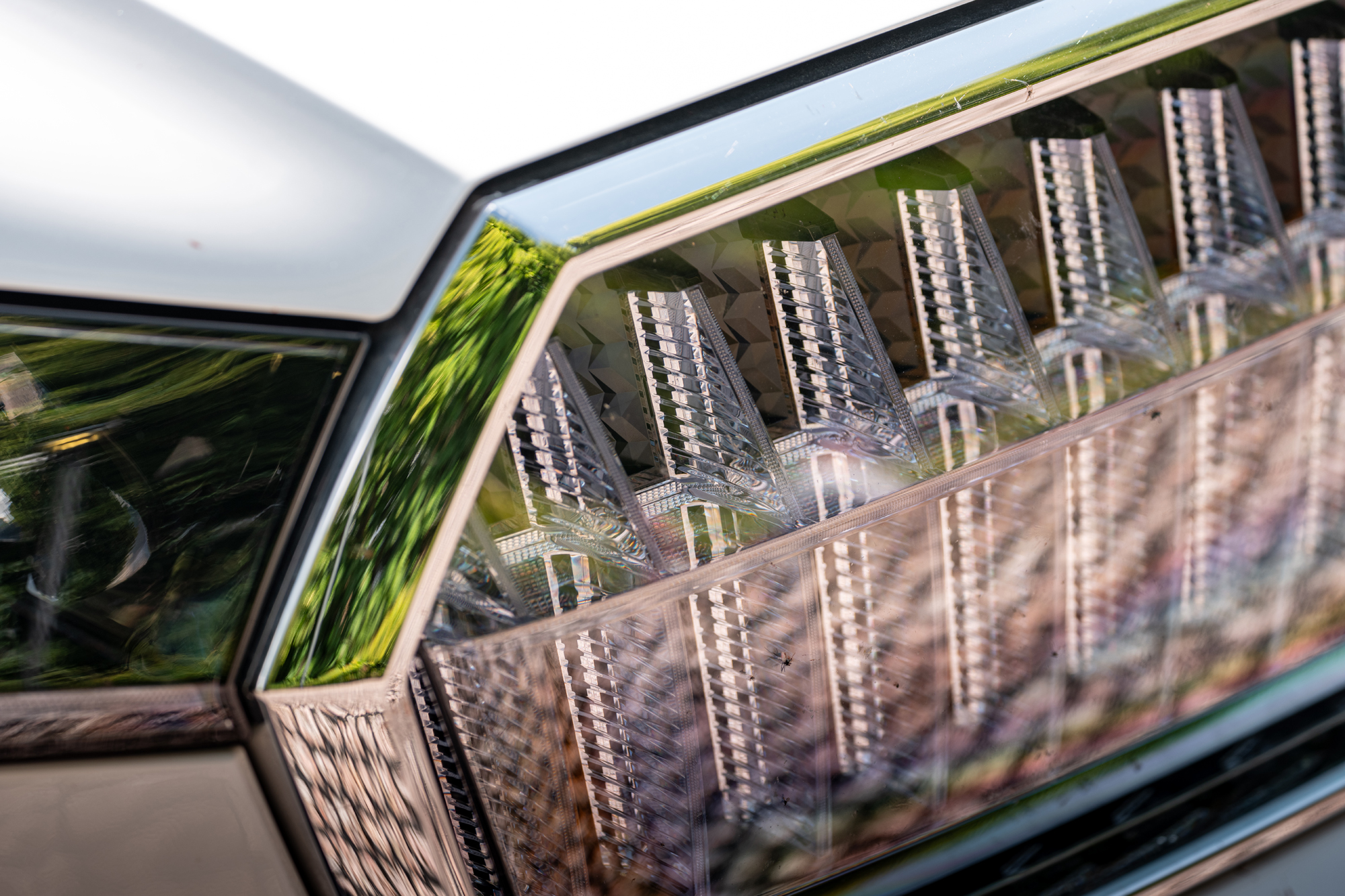
Two USB-C ports can be found between the front seats, and that’s just the start of the Scenic’s child-calming measures. Pull down the central rear armrest and flip up the cushioned bit to find two more USB ports in a felt-lined tray. The pair of cupholders have rotatable ears that cunningly have smartphone holders in them. They can be angled at will, or spun around 180º to combine into a more suitable tablet holder. It’s so easy to use that you wonder why it’s not universal.
The Skoda also has some neat details, such as Velcro dividers attached either side of the low central floor bump to create a storage area, a smaller smartphone pocket attached to the main pockets on the back of the front seats, and folding tables.
It’s spacious, too. Rear legroom is still enough for six-footers and headroom isn’t as negatively impacted by the coupe roofline as you might expect. Your tall friends will probably be fine back there, something that may not be the case with the Peugeot. It has the least legroom of our trio, with my tallest testing assistant finding not much space between their shins and the driver’s seat.
The E-3008 isn’t badly equipped for family life, with a couple of USBs on the back of the centre console, nets on the backs of the front seats and an armrest with cupholders. What you won’t find is the cleverness of the other two, although it does have the largest boot on test at 588 litres. That’s 18 up on the Enyaq and a useful 43 more than the Scenic.
It isn’t just in capacity that the Peugeot scores. All versions of the E-3008 get a two-position boot floor that gives you either a small loading lip and some underfloor storage, or a deeper boot when you need it. It also makes pushing in long items easier, as there’s no step from the boot floor to the backs of the folded rear seats. That they fold in a 40/20/40 split is another bonus, maximising versatility. The Scenic matches this, but the Enyaq has a 60/40 split, albeit with a load-through facility.
A variable-height boot floor is an option on the Enyaq. Without it there’s a big drop from the boot’s opening to the floor, and the boot-mounted seat release is handy. So too is the standard gesture-controlled tailgate, something that comes with GT-spec E-3008s but no Scenic. That does get a conventional electric tailgate, though.
Where the E-3008 and Enyaq’s loadbays are quite long, the Scenic’s is shorter and deeper. There’s still plenty of capacity, but there’s more of a loading lip to contend with and more chance you’ll be stacking stuff to make it fit.
Where the headline-grabbing electric hypercars have little to offer beyond the novelty of rarely-used acceleration, EVs of this type make a lot of sense every day
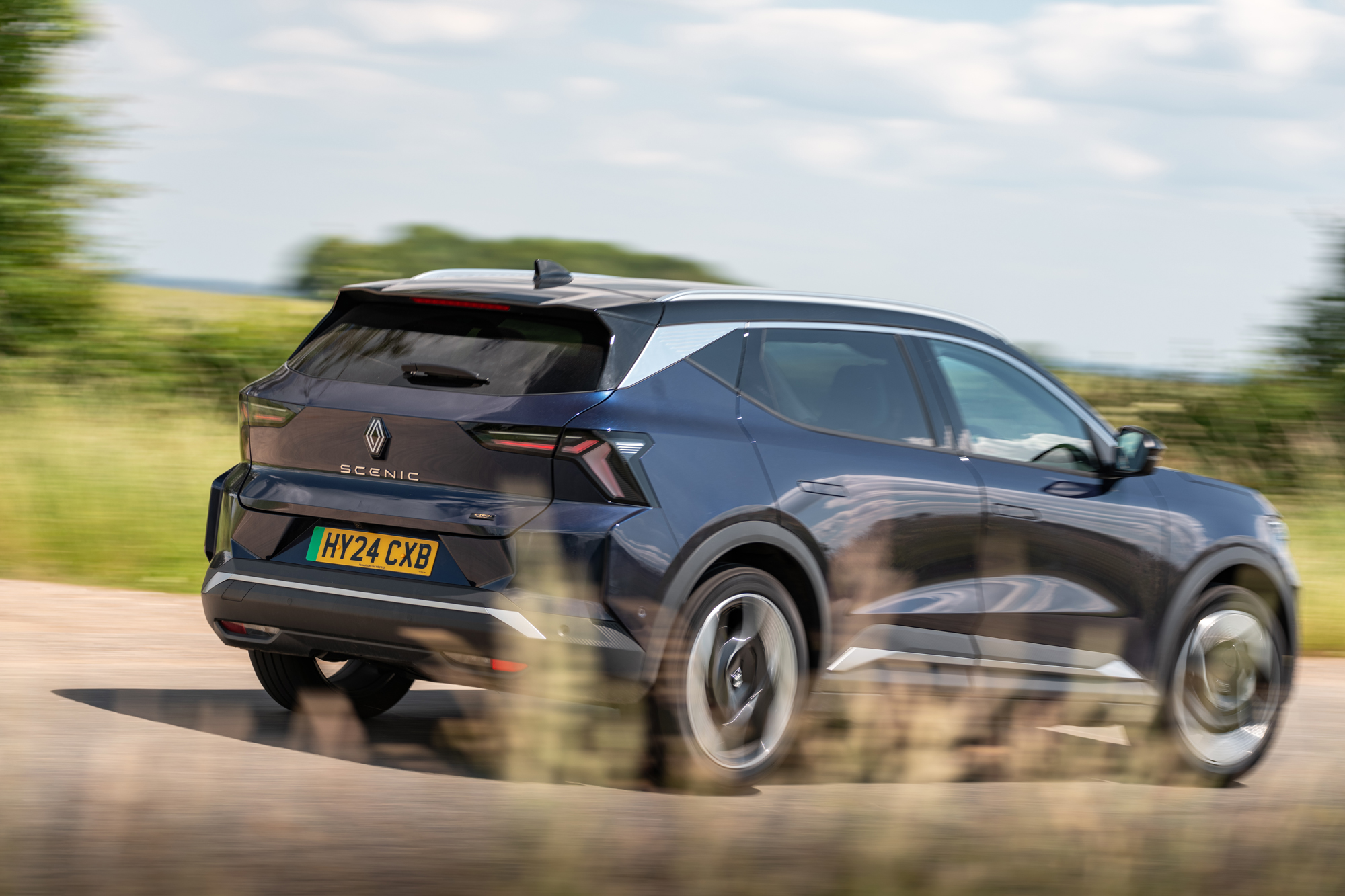
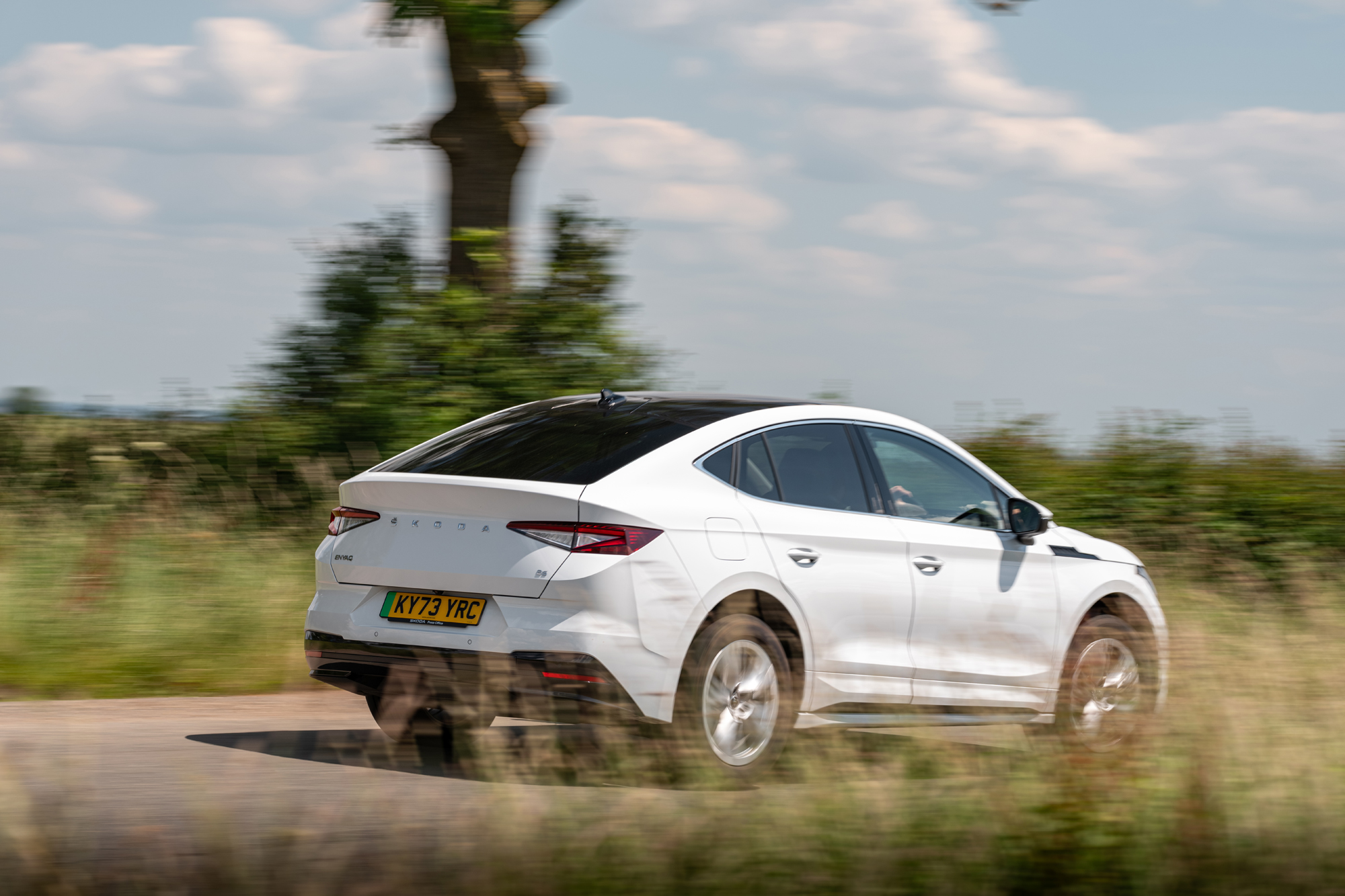
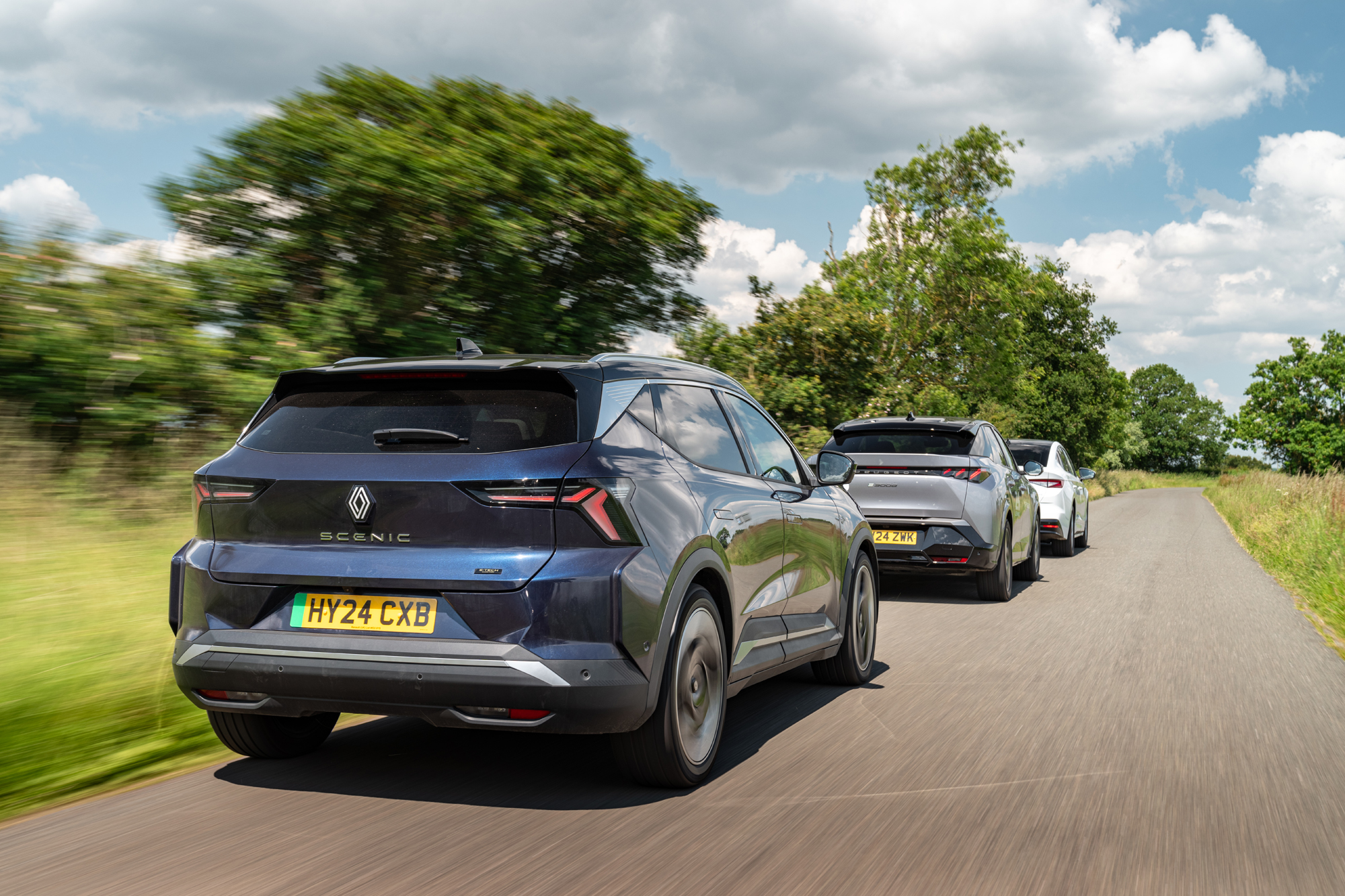
When it comes to rapid charging, the Long Range Scenic maxes out at a relatively weedy 150kW to give a 37-minute 15 to 80 per cent charging time, the longest here. Its big 87kWh battery also means nearly 13 hours for a zero to 100 per cent charge on a home wallbox. This can be cut to nine hours on an 11kW charger or just under five with a 22kW unit.
While four-wheel-drive versions of the Enyaq have their maximum charge speed upped to 175kW, rear-wheel-drive 85s still only charge at a maximum of 135kW for a 36-minute 10 to 80 per cent time. That’s still faster than the Renault on account of the Enyaq’s smaller 77kWh battery. AC charge times are 7.5 hours at 11kW or just over 12 at 7.4kW, both for a zero to 100 per cent charge.
The E-3008 is speedier, thanks to a smaller 73kWh battery and maximum 160kW charging rate, but not by much. A 30-minute rapid charge time sounds great, but that’s for a 20 to 80 per cent top-up, while the maximum AC charging rate is 11kW. That allows for a seven-hour nought to 100 per cent charge, increasing to 10.5 hours on a normal 7.4kW wallbox.
So clearly all three cars leave room for improvement, but even the least impressive of them is a pretty decent package. Where the headline-grabbing electric hypercars have little to offer beyond the novelty of rarely-used acceleration, EVs of this type make a lot of sense every day: the school run is cleaner, the cabin is quieter for family conferences on the move, there’s a good amount of room, and running costs should be pretty keen. Feels like progress to us.
The Final Reckoning
And then there were two
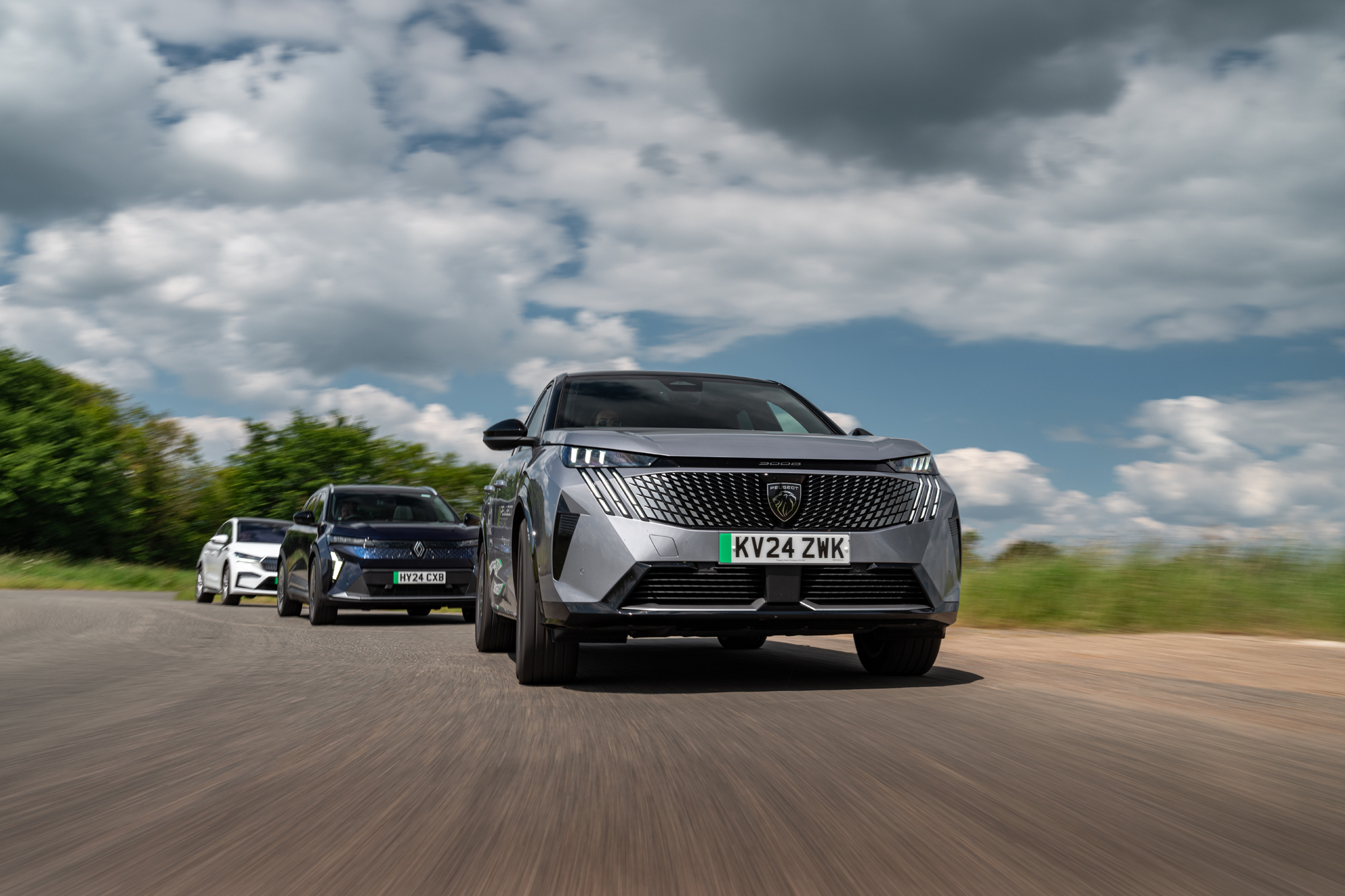
This has been a closely fought test, albeit between two of the cars, with the E-3008 lagging behind in some important areas. Get past the Peugeot’s sharp styling and dramatic interior, and you’re left with an SUV that’s not very comfortable, feels leaden in the corners, and isn’t particularly efficient in the real world despite its underwhelming performance.
It’s also the most cramped for rear-seat passengers, and they don’t get as many clever features as passengers in the other two. The final nail in the coffin is the steepest list price and PCP finance that, at the time of writing, cost £100 a month more than the rivals on comparable terms. Even entry-level Allure spec is £50 pricier.
Separating the Enyaq and Scenic is a much tougher challenge. The Renault is slightly cheaper to buy and finance, but the margins are small.
The Enyaq feels like a sensible choice, even as the less practical Coupe. Yes, you do lose a little space compared to the SUV, and it does cost more, but you do get a small efficiency boost that improves range by six miles.
Even in this guise, it’s a fine family car that arguably strikes a better balance between rear seat and boot space than the Scenic. The new motor has certainly perked up performance, and it’s more efficient on test than the Peugeot and Renault, and there is fun to be had behind the wheel.
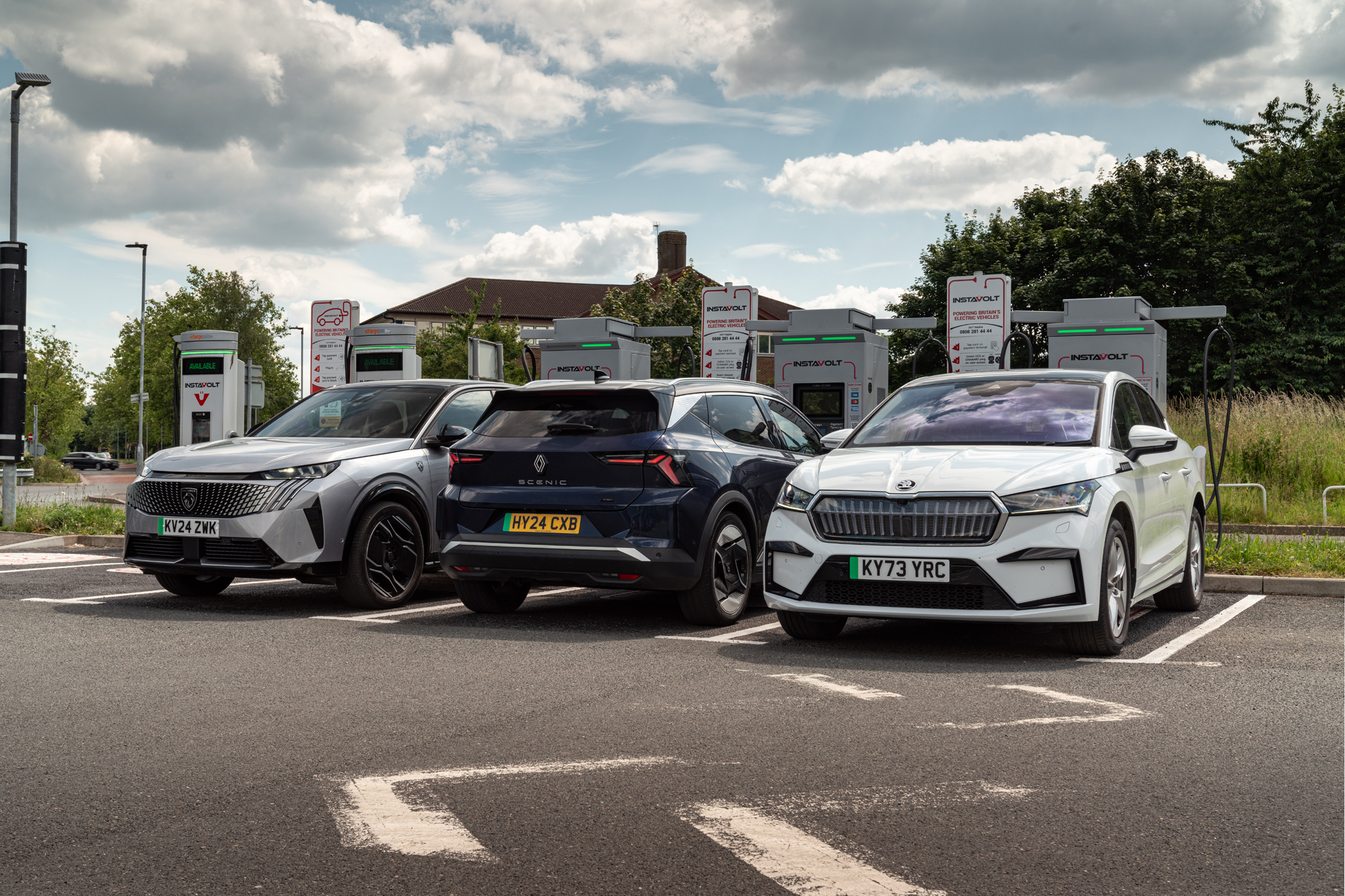
However, as good as the Enyaq is, it’s the Scenic I’d want as my family wagon. Its boot is big enough, boosted by more flexible rear seats. The rear armrest is genius, and it’s on the whole a more pleasant environment.
Where the Enyaq is a sea of dark materials inside, the Scenic has a lightness and stylishness. It’s also more user-friendly thanks to a few well-chosen buttons, and more comfortable. Suppler suspension feels appropriate for a family car, and there’s no pitch and heave to cause queasiness.
Even with this family focus, it’s still a satisfying car to drive, and should have the longest real-world range. After all, it has the biggest battery here and efficiency not far from what the Enyaq was getting. It’s also the most affordable – don’t forget those finance figures are for a top-spec model, and base Techno is not poorly equipped. Looks like those European Car of the Year judges were on to something.

Facts & Figures | Renault Scenic
What’s the line-up?
There’s a choice of two batteries and three trim levels with the Scenic. The entry point is the Comfort Range with a 60kWh battery, 168bhp and a 260-mile driving range. That’s only available in entry-level Techno trim and costs a reasonable £37k. Jumping up to Long Range gives you 87kWh, 217bhp and up to 379 miles for £41k. Esprit Alpine is the sporty-looking mid-range trim choice that doesn’t really add a great deal more equipment. If you want extra gadgets, you’ll need top-of-the-range Iconic which, at £47k, is only slightly more than the entry-level versions of rivals.
Data
Price £37,495 (£46,745 as tested)
Powertrain 87kWh battery, electric motor, front-wheel drive
Performance 217bhp, 221Ib ft, 7.9sec 0-62mph, 105mph
Weight 1852kg
Efficiency 4.2 miles per kWh, 369-mile range, 0g/km
Length/width/height 4470/2085/1589mm
Boot capacity 545 litres

Facts & Figures | Peugeot E-3008
What’s the line-up?
You don’t get much choice with the E-3008 currently. Long-range and four-wheel drive versions are on the way, but at the time of writing it’s a single 207bhp, 300-mile+, 73kWh front-wheel-drive model that’s available to order starting at £46k. There are two trim levels to pick from, although neither of them can be described as bargain basement. Allure gets all the equipment you really need, with GT adding niceties like heated front seats and jazzier looks inside and out.
Data
Price £45,850 (£51,700 as tested)
Powertrain 73kWh battery, electric motor, front-wheel drive
Performance 207bhp, 254Ib ft, 8.8sec 0-62mph, 105mph
Weight 2108kg
Efficiency 4.5 miles per kWh, 326-mile range, 0g/km
Length/width/height 4542/2108/1641mm
Boot capacity 588 litres

Facts & Figures | Skoda Kodiaq Coupe
What’s the line-up?
We know and like the Skoda Enyaq, but this one’s a little different. For a start, it’s the slinkier Coupe, and the whole line-up has received a few upgrades. Coupes are 77kWh only, paired with a rear-mounted motor that delivers 282bhp, dual motors that output the same but split over both axles, or the vRS which ups power to 335bhp. The vRS is a standalone model costing nearly £55k, with all dual motors Sportline Pluses. Rear-drive choice is between entry-level Edition at £46k or luxurious L&K at £53k. Edition has the longest range at 364 miles, Sportline the least at 333.
Data
Price £46,440 (£51,445 as tested)
Powertrain 77kWh battery, electric motor, rear-wheel drive
Performance 282bhp, 402Ib ft, 6.7sec 0-62mph, 111mph
Weight 2140kg
Efficiency 4.7 miles per kWh, 364-mile range, 0g/km
Length/width/height 4653/2148/1621mm
Boot capacity 570 litres

